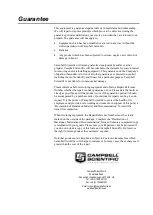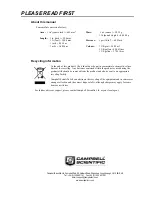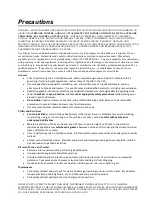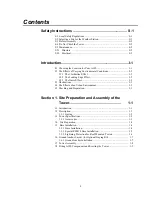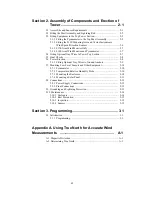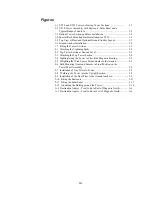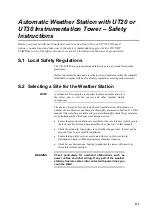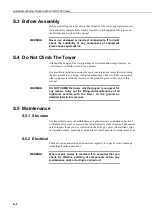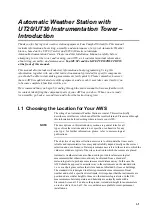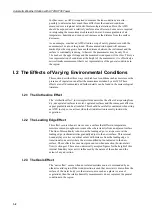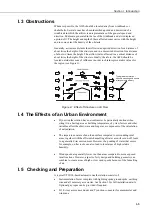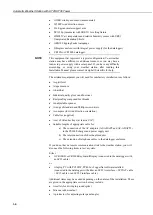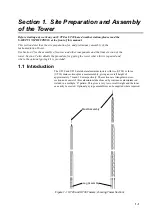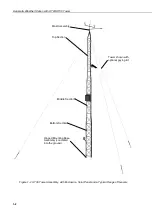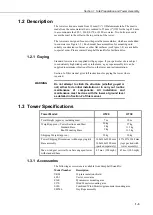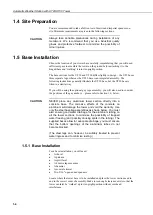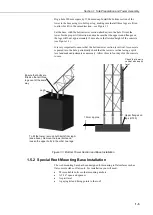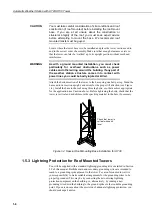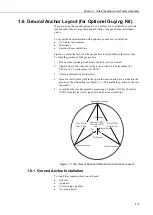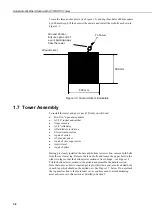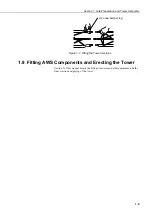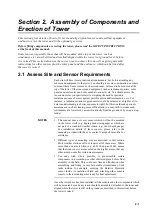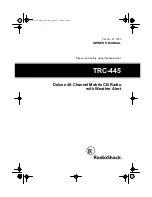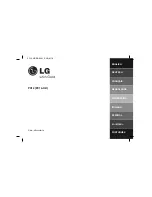
Automatic Weather Station with UT20/UT30 Tower
I-2
In other cases, an AWS is required to measure the true conditions at a site —
possibly to determine how much these differ from the standard conditions
measured over a regional network of meteorological stations. Here, the AWS
should be exposed over a relatively uniform area of terrain. Some care is required
in interpreting the measurements obtained, however, because gradients of air
temperature, humidity and wind speed increase as the distance from the surface
decreases.
As an example, consider an AWS sited in a crop of newly planted corn with the
anemometer 2 m above the ground. The measured wind speed will decrease
markedly as the crop grows because the distance between the instrument and the
surface is continually reducing. At harvest the anemometer may be only 20 or
30 cm above the upper foliage and the measured wind speed will be slow. This is a
true representation of conditions at the height of the anemometer; it is effectively a
microclimatic measurement that is not representative of the general conditions in
the region.
I.2 The Effects of Varying Environmental Conditions
This section describes three ways in which local conditions such as moisture or the
presence of vegetation can affect the measurements taken by an AWS. These
effects are well documented and further details can be found in the meteorological
literature.
I.2.1 The Clothesline Effect
The ‘clothesline effect’ in its simplest form describes the effect of air passing from
dry, unvegetated surfaces to moist, vegetated surfaces and the consequent effect on
vapour gradients and heat transfer. This should be carefully considered when siting
an AWS in crops or near trees when the wind direction is mostly towards the
vegetation.
I.2.2 The Leading Edge Effect
This effect occurs when air moves over a surface that differs in temperature,
moisture content, roughness or some other characteristic from an adjacent surface.
The line of discontinuity is known as the leading edge. As air passes over the
leading edge its characteristics gradually adjust to the new surface. This internal
boundary layer varies in vertical extent with distance from the leading edge. A
transitional zone exists where the air is modified but not adjusted to the new
surface. These effects become most pronounced when advection (horizontal air
flow) is strongest. There are no universally accepted figures for the height of this
internal boundary layer as it is influenced by the nature of the surface and the
extent of any advection.
I.2.3 The Oasis Effect
The ‘oasis effect’ occurs when an isolated moisture source is surrounded by an
otherwise arid region. If the wind direction is such that moist air is drawn from the
surface of the water body (or other water source such as a glacier or area of
vegetation), then the relative humidity measurements do not represent the general
conditions in the region.


